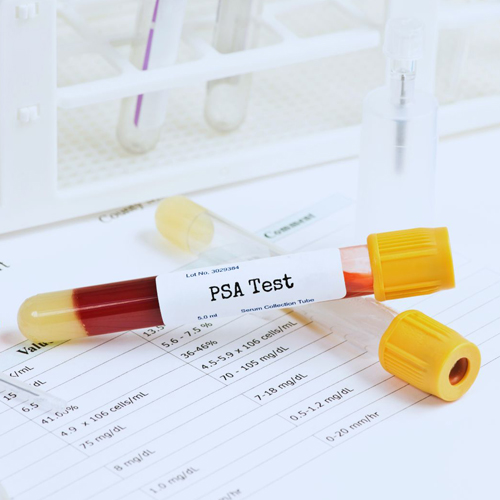
The prostate gland (often called the prostate) is an unpaired organ of the male reproductive system.
In shape, it resembles a chestnut, with dimensions in a normal state being 3x2.5x2.5 cm. The prostate gland is located in the pelvis, directly below the bladder, occupying the space from the pubic bone to the rectum.
Despite its small size, the prostate plays a significant role in a man's vital functions.
The functions of the prostate gland include:
- Production of prostatic secretion,
- Regulation of erection,
- Metabolism of male sex hormones,
- Mechanical separation of processes of ejaculation and urination.
There are several diseases of the prostate gland that cause its enlargement, leading to compression of the urethra and a disruption in the flow of urine from the bladder.
The most common pathologies of the prostate gland are as follows::
- Inflammatory changes in the prostate gland - prostatitis: This is an infectious or non-infectious inflammation of the tissues of the prostate gland. Inflammation can occur in acute or chronic forms. Due to the ongoing pathological process, the organ enlarges and becomes swollen.
- Non-inflammatory changes with an increase in volume - benign prostatic hyperplasia (BPH): In other words, prostate adenoma. The essence of the changes is that the volume of the organ increases due to the proliferation of glandular tissues in the prostate.
- Neoplastic changes - oncological changes: These changes are associated with the cancerous transformation of cells and their relatively rapid growth. The prostate itself is rarely the source of oncology, and cancer develops from the paraurethral glands. However, due to the high malignancy, the prostate itself is quickly involved in the process.
Prostate cancer is characterized by a high degree of lethality and ranks 2nd globally among the causes of death from oncological diseases in men.
This disease is typical for elderly men, but increasingly younger patients, aged 45-55, are being diagnosed with prostate cancer in practice. Therefore, it is particularly important to diagnose malignant changes in a timely manner and to select an effective treatment method as early as possible.

The main risk factors for malignant formation include the presence of chronic prostatitis or prostate adenoma. Due to the existing pathological process and a possible predisposition to oncology, there is a likelihood of incorrect cell division and their transformation.
Symptoms of prostate cancer:
Usually, in the early stages of prostate cancer (PCa), symptoms are absent, as peripheral areas of the prostate gland are most commonly affected.
All symptoms characteristic of prostate cancer can be divided into three groups::
1. Infravesical obstruction:
- Weak and intermittent urine stream,
- Sensation of incomplete emptying of the bladder,
- Increased frequency of urination,
- Urgency to urinate,
- Stress urinary incontinence.
2. Local progression of the tumor::
- Hematospermia (presence of blood in semen),
- Hematuria (blood in urine),
- Urinary incontinence,
- Erectile dysfunction,
- Pain in the suprapubic region and perineum.
3. Distant metastases:
- Bone pain, especially in the back (due to ureteral obstruction),
- Edema of the lower extremities (lymphedema),
- Paraplegia (compression of the spinal cord),
- Weight loss,
- Anemia,
- Uremia,
- Cachexia.
What diagnostic methods are currently used for prostate cancer?
Digital rectal examination is a procedure in which the doctor inserts a finger into the patient's rectum through the anal opening and palpates the prostate through the rectal wall. During the digital rectal examination, nodules can be detected in the prostate, and it can be determined whether the lesions are unilateral or bilateral. To confirm the malignant nature of the tumor, specify its size and location, further investigations will be necessary. Digital rectal examination only helps to detect tumor-like formations but does not establish a definitive diagnosis.
Prostate-specific antigen (PSA) blood test is currently used for screening (examining men without symptoms) and when symptoms suggestive of a malignant tumor occur..
Transrectal ultrasound (TRUS) is performed using a special sensor inserted into the rectum through the anal opening. This helps bring the sensor as close as possible to the prostate and obtain the maximum useful information.
Magnetic resonance imaging helps refine the location of the affected area, check whether the malignant tumor has spread beyond the prostate, into the seminal vesicles, and other adjacent organs. The procedure is complemented by contrast to improve visualization.
Prostate biopsy –is the most reliable diagnostic method; it allows for a reliable determination or exclusion of the malignant nature of the neoplasm in the prostate. Tissue samples are obtained using a thin needle inserted into the prostate through the rectal wall. The procedure takes about 10 minutes, and the doctor makes about 12 "shots" to obtain samples from different parts of the prostate.
X-ray helps detect bone metastases, and chest X-rays can reveal secondary foci in the lungs. Radioisotope scanning is also used to detect bone metastases. Computed tomography is performed in cases where there is suspicion that the malignant tumor has spread beyond the prostate. This diagnostic method helps detect the spread of cancer cells to regional lymph nodes. In the case of recurrence, computed tomography is used to assess the involvement of adjacent pelvic organs and structures.
It is recommended that in case of initial diagnosed changes or doubts about the condition of the prostate, one should immediately consult a specialist. A wait-and-see approach, self-diagnosis, and self-treatment are dangerous, as they can progress the disease to a stage where complete recovery becomes impossible.



